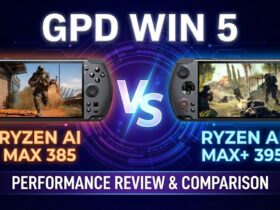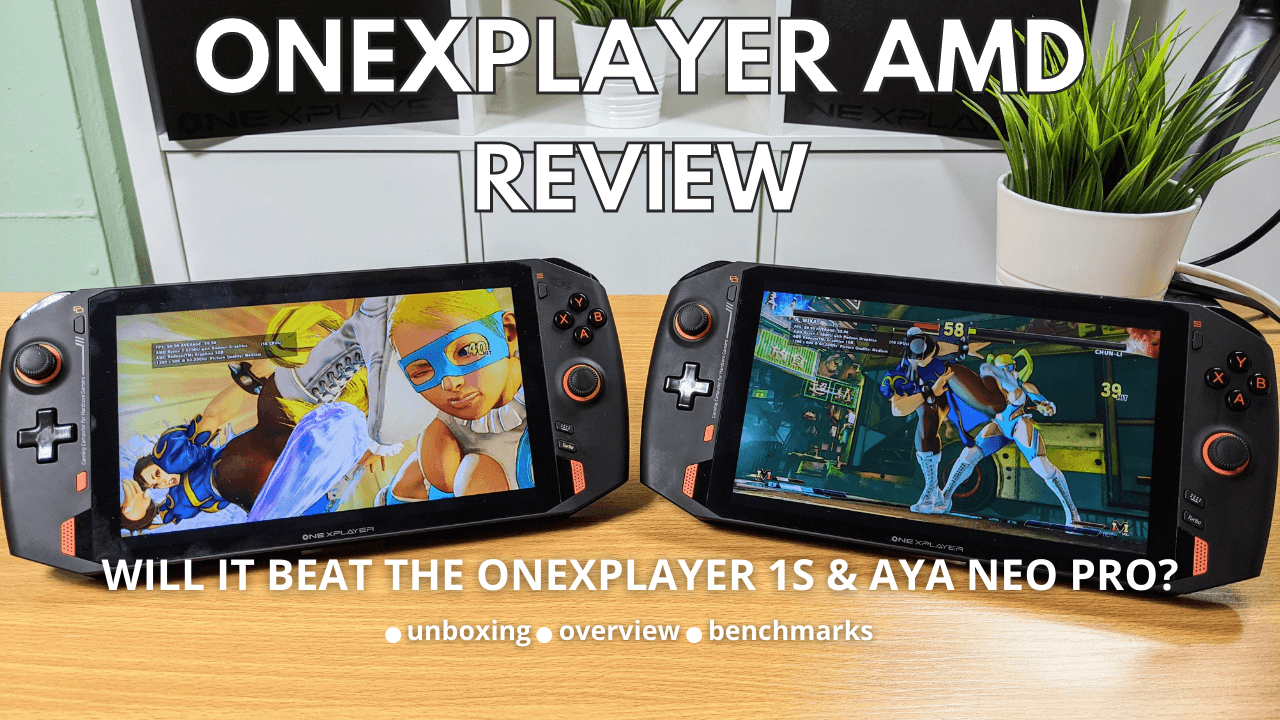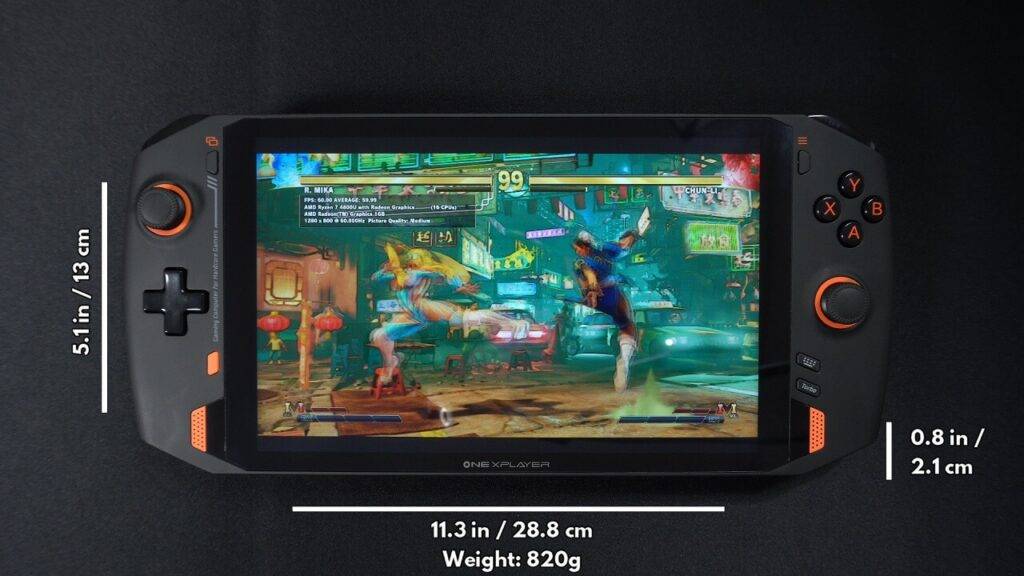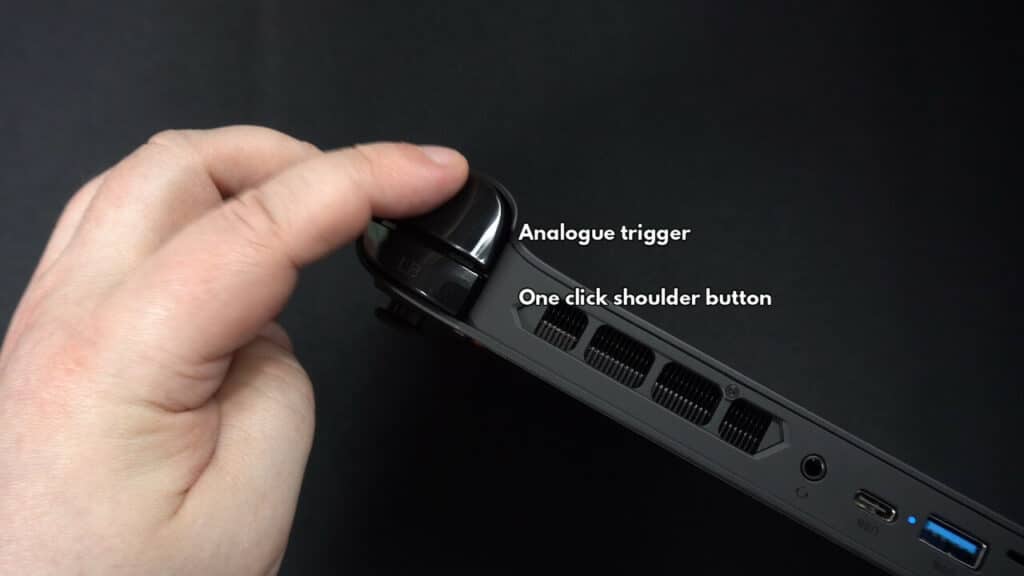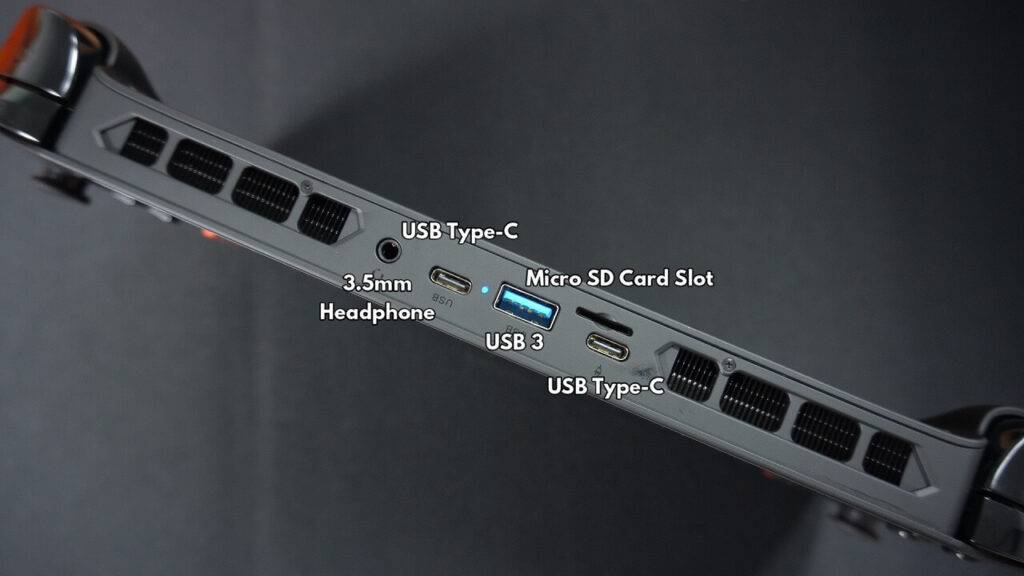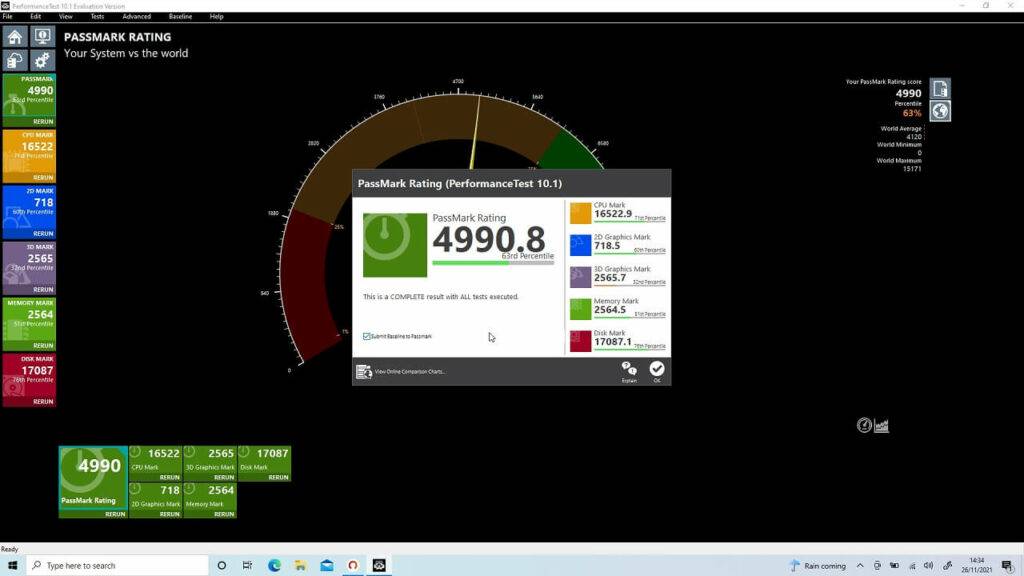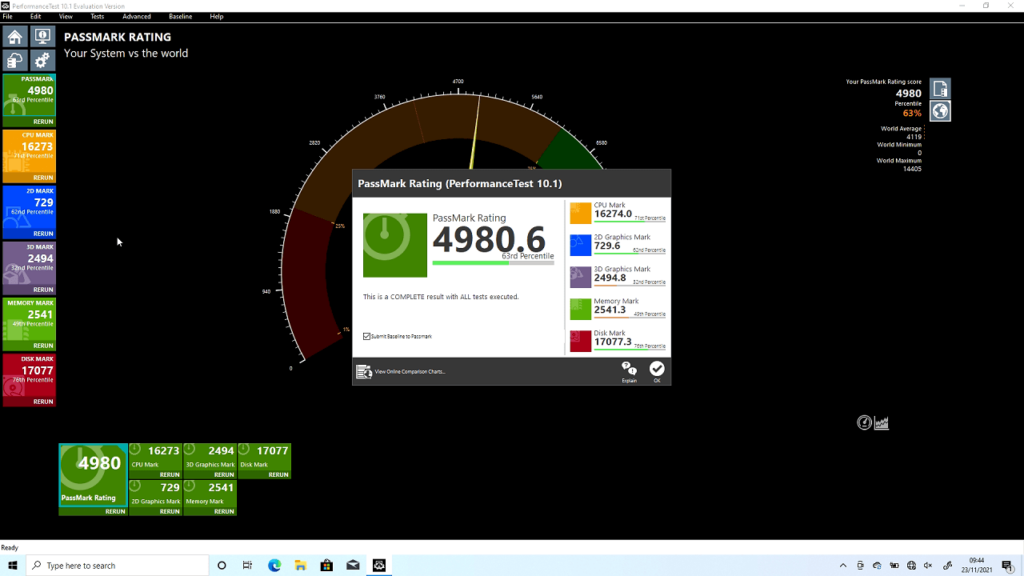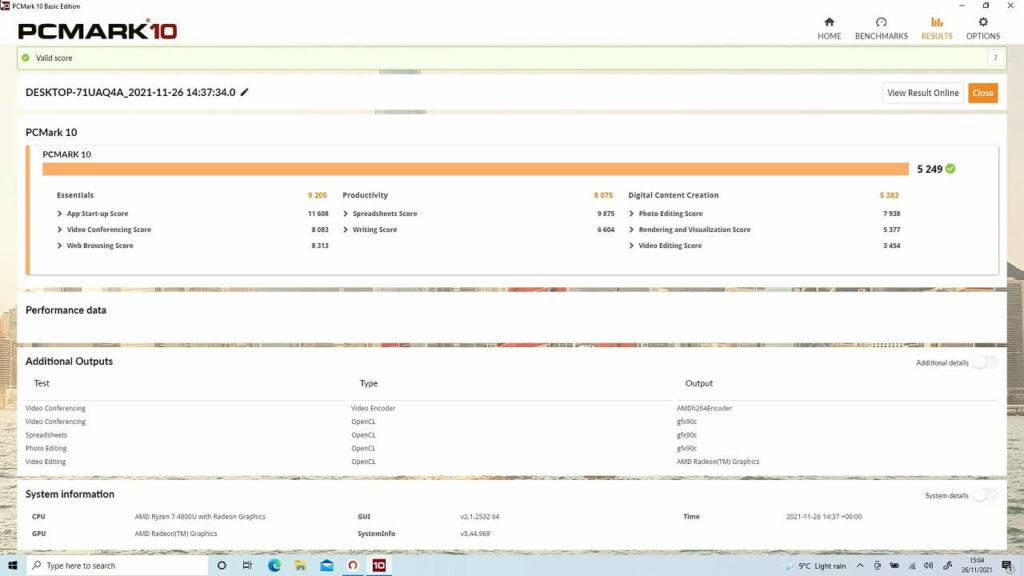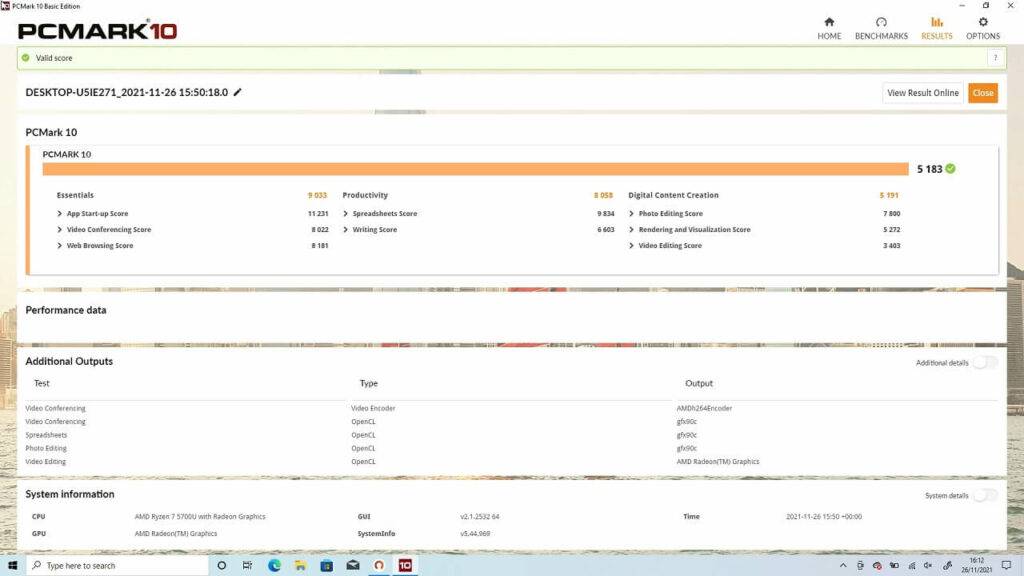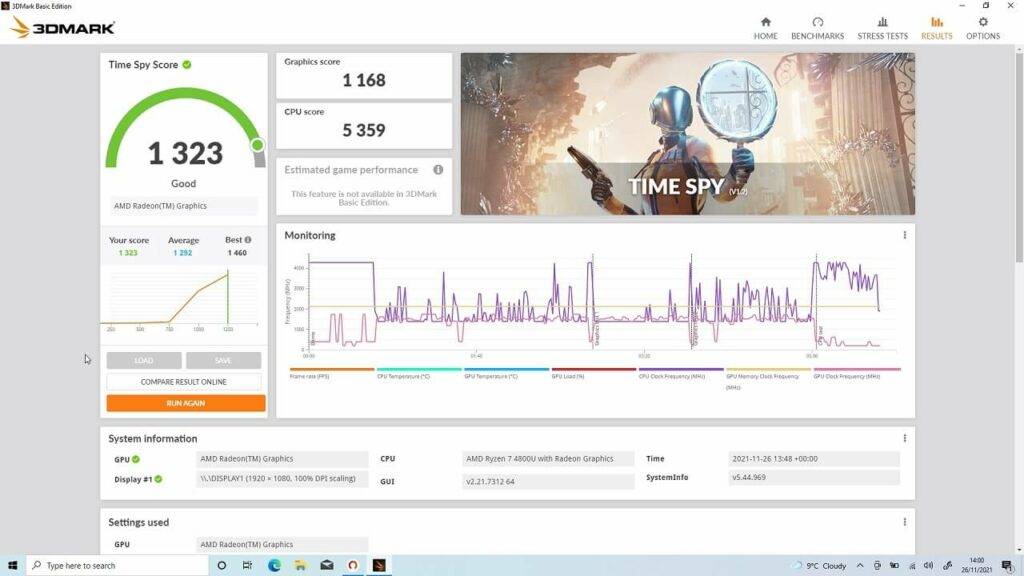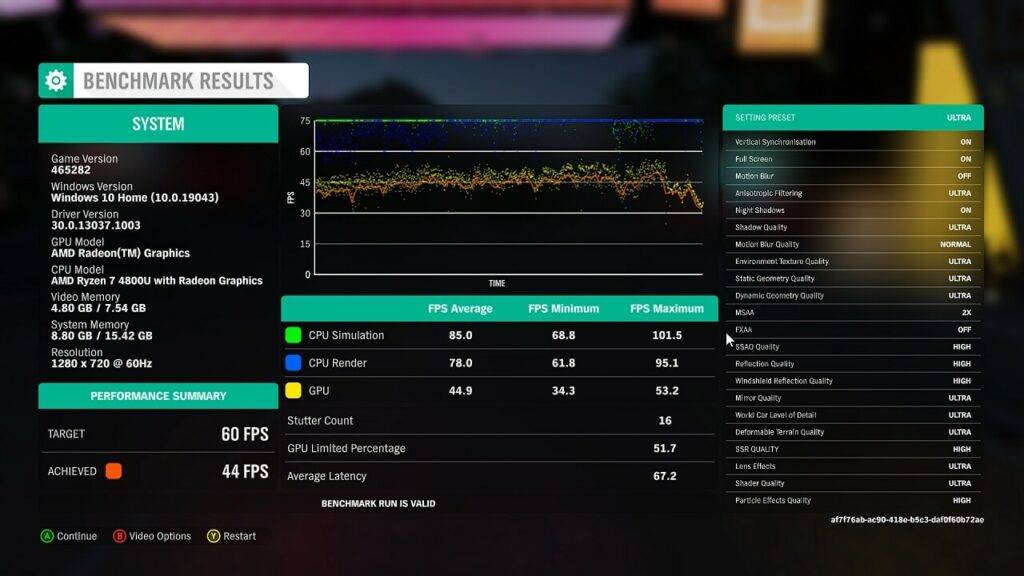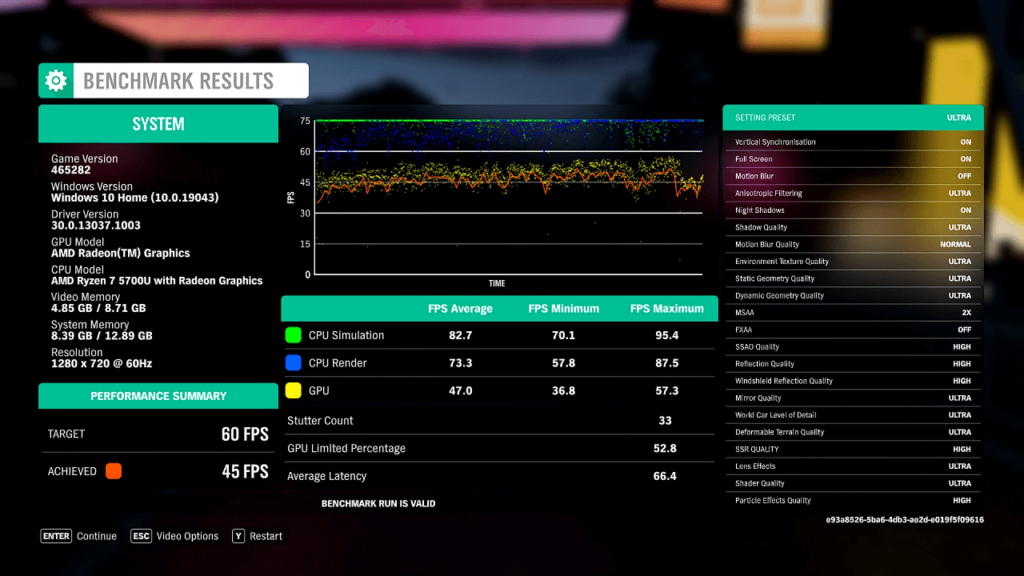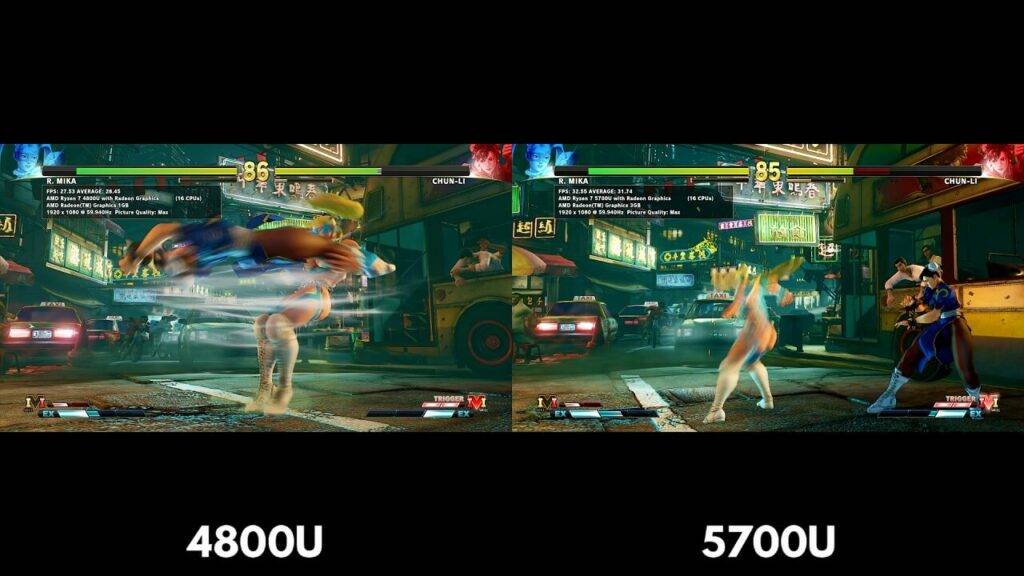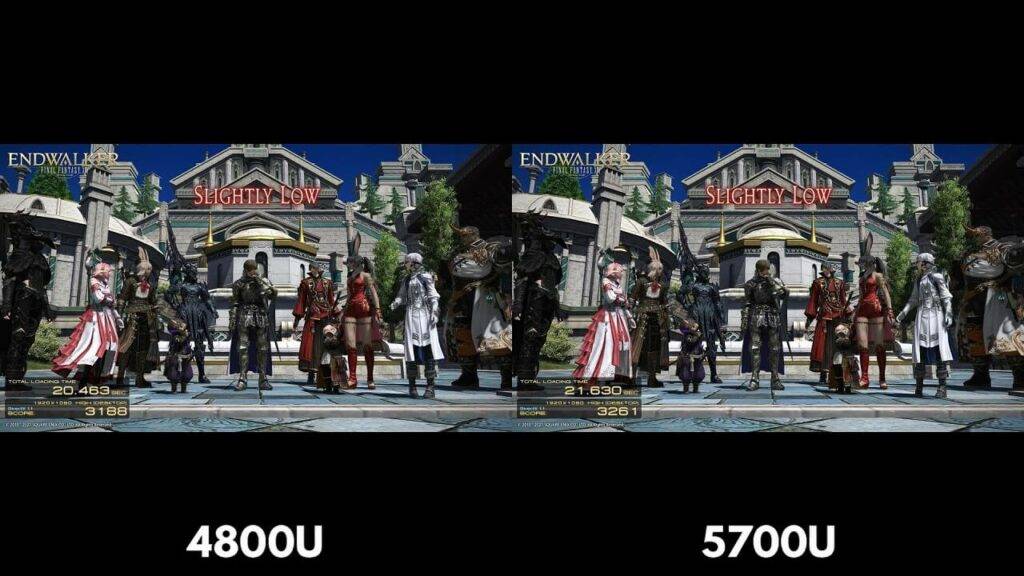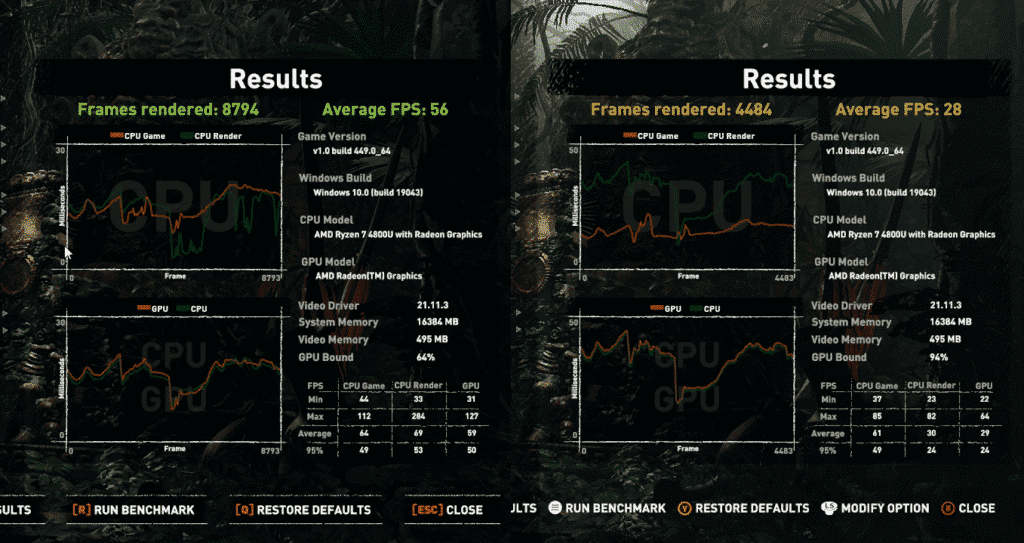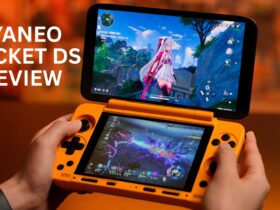Pārskats
-
Build Quality
(5)
-
Features
(4.9)
-
Performance
(4.7)
Kopsavilkums
Ja jums patīk ONEXPLAYER izmērs un vēlaties AMD, nevis Intel ierīci, tad šī ir tā, kas jāņem vērā. Ja vēlaties jaudīgāku AMD portatīvo ierīci, iesakām iegādāties AYA NEO Pro.
Kopumā
4.9Lietotāja atsauksme
( votes)Plusi
- Masīvs 8,3 collu FHD IPS skārienekrāns ar 2560×1600 izšķirtspēju
- Augstas kvalitātes analogās stūres, D-Pad un pogas, kas reaģē uz izmaiņām.
- Ar prieku darbina AAA Windows spēles ar lieliskiem iestatījumiem
- Spēlē augstākās klases konsoļu emulāciju
- Divi USB Type-C porti WiFi 6 un Bluetooth 5 ātrai datu pārsūtīšanai
Mīnusi
- Tas ir ļoti liels, tas neiekļaujas jūsu kabatā!
- Nav tik jaudīgs kā ONEXPLAYER 1S vai AYA NEO Pro
Mūsu ONEXPLAYER AMD pārskatā mēs tos izjauksim un pārbaudīsim funkcijas. Pēc tam mēs izpildīsim dažus sistēmas un spēļu salīdzinošos testus, lai redzētu to veiktspēju un salīdzinātu tos ar citām Windows spēļu konsolēm.
ONEXPLAYER AMD pārskata video
ONEXPLAYER AMD Izpakošana
Ļauj sākt ar izkraušanu. Vispirms ir ONEXPLAYER AMD, kuru mēs drīzumā parādīsim sīkāk. Ir pievienota lietotāja rokasgrāmata, kas ir ķīniešu un angļu valodā. Kastītē ir lādētājs, mēs pievienosim pareizo adapteri jūsu valstij. Un C tipa USB uzlādes kabelis.
Pārskats
ONEXPLAYER AMD modelis būtībā ir tāds pats kā Intel modelis. Tā izmēri ir 11,3 x 5,1 x 0,8 collas (28,8 x 13 x 2,1 cm) un svars 820 g.
Displejs ir 8,3 collu IPS ekrāns ar standarta izšķirtspēju 2560×1600. Tas atbalsta 10 punktu pieskārienu un arī One Netbook Stylus, ko var iegādāties atsevišķi.
Kreisajā pusē ir Atpakaļ poga, klikšķināmā kreisā analogā stūre, klasiskais d-pad, darbvirsmas poga un kreisais skaļrunis. Labajā pusē ir sākuma poga, četras spēļu pogas un klikšķināmā labā analogā stūre.
Zemāk ir divas pogas. Pirmā ir taustiņklaviatūras un peles poga, kuru nospiežot, tiek parādīta ekrāna tastatūra. Nospiežot to nospiestu, tā pārslēdzas uz peli un otrādi, zem tās ir Turbo režīma poga, kas palielina TDP, lai nodrošinātu lielāku veiktspēju.
Augšpusē abās pusēs ir skārienjutīgais klikšķa buferis un lineārās analogās sprūda pogas.
Vidusdaļā ir 3,5 mm austiņu ligzda, divas C tipa USB pieslēgvietas, USB 3 pieslēgvieta un Micro SD kartes slots.
ONEXPLAYER AMD tehniskā specifikācija
Tālāk ir sniegta gan 4800U, gan 5700U AMD modeļu tehniskā specifikācija.
| ONEXPLAYER AMD 4800U | ONEXPLAYER AMD 5700U | |
| CPU | AMD Ryzen 7 4800U ar 8 kodoliem un 16 pavedieniem | AMD Ryzen 7 5700U ar 8 kodoliem un 16 pavedieniem |
| MAX FREKVENCIJA | 4,20 GHz | 4,30 GHz |
| GPU | AMD Radeon Graphics @ 1750 Mhz | AMD Radeon Graphics @ 1900 Mhz |
| RAM | 16 GB LPDDR4x @ 4266Mhz - divkanālu optika | 16 GB LPDDR4x @ 4266Mhz - divkanālu optika |
| GLABĀŠANA | 1 TB PCIe 4.0 paaudzes NVMe 1.4 | 1 TB PCIe 4.0 paaudzes NVMe 1.4 |
| BATTERY | 15300mAh Pilna slodze: 2 stundas Bezdarbs: 7,5 stundas | 15300mAh Pilna slodze: 2 stundas Bezdarbs: 7,3 stundas |
| VENTILATORA TROKSNIS | 57db ar ventilatoru pilnā ātrumā, ar nelielu fona troksni birojā. | 57db ar ventilatoru pilnā ātrumā, ar nelielu fona troksni birojā. |
Sistēmas etaloni
Sākotnējā rakstā bija problēma, kas īpaši attiecās uz 4800U parauga modeli. Tika ziņots, ka tas darbojas ar 20 W TDP, bet izskatās, ka tas darbojas ar 12 W. Tas deva neprecīzus salīdzinošo testu rezultātus, tāpēc mēs atkārtoti pārbaudījām abus modeļus un apstiprinājām, ka tie darbojas ar 20 W. Mēs neesam pārliecināti, kas izraisīja šo problēmu, bet mēs pārbaudīsim mazumtirdzniecības versijas, tiklīdz tās būs pieejamas.
PassMark
Sistēmas salīdzinošos testus sākam ar PassMark. Tas testē CPU, GPU RAM un atmiņas krātuvi līdz maksimālam vai mākslīgam veiktspējas rādītājam.
ONEXPLAYER AMD 4800U modeļa cena 4 990 punkti
ONEXPLAYER AMD 5700U modeļa rezultāts ir 4980 punkti
PCMark
Tālāk ir PCMark, kas testē ikdienas uzdevumus. Tie ietver visus uzdevumus, sākot ar tīmekļa pārlūkošanu, multivides lietojumu, darbu ar lieliem biroja dokumentiem un attēlu rediģēšanu.
4800U modelim ir 5 249 punkti
5700U modelim ir 5 183 punkti
3DMark
3DMark kopā testē CPU un GPU grafikas veiktspēju, ko var izmantot video rediģēšanai, multivides patēriņam un, protams, spēlēm.
AMD 4800U modeļa rezultāts ir 1323 punkti.
AMD 5700U modeļa rezultāts ir 1367 punkti.

Spēļu kritēriji
Forza Horizon 4
Spēļu salīdzinošos testus sākam ar Forza Horizon 4, kas darbojas 1280×720 izšķirtspējā ar Ultra grafikas iestatījumiem.
ONEXPLAYER 4800U modeļa rādītāji ir 44 kadri sekundē.
ONEXPLAYER 5700U modeļa rādītāji ir augstāki - 45 kadri sekundē.
Street Fighter V
Mūsu Street Fighter V etalonmērījumā mēs testējam vidējo FPS līdz pirmās spēles beigām. Mēs darbināmies 1920×1080 izšķirtspējā ar maksimālajiem grafikas iestatījumiem.
AMD 4800U modeļa vidējais rādītājs ir 30,2 FPS, bet AMD 5700U modeļa vidējais rādītājs ir 31,2 FPS. ONEXPLAYER AMD pārskata videoklipā redzama veiktspējas atšķirība, jo 5700U modelis apsteidz 4800U modeli, lai gan sāk darboties vienlaicīgi.
Final Fantasy XIV
Mūsu Final Fantasy XIV salīdzinošajā testā mēs izmantojām 1920×1080 izšķirtspēju ar High Desktop grafikas iestatījumu.
ONEXPLAYER AMD 4800U modeļa rezultāts ir 2779 punkti, bet ONEXPLAYER AMD 5700U modeļa rezultāts ir 3221 punkts.
Shadow of the Tomb Raider
Mūsu pēdējais etalons ir Shadow of the Tomb Raider, kas darbojas 1280×720 izšķirtspējā. Mēs veicam divus testus, vienu ar zemākajiem grafikas iestatījumiem, bet otru ar augstākajiem, lai redzētu veiktspējas atšķirības.
AMD 4800U modeļa rādītāji ir 56 kadri sekundē (fps) zemākajā režīmā un 28 kadri sekundē augstākajā režīmā.
AMD 5700U modelim ir 57 punkti zemākajā un 29 punkti augstākajā kategorijā.
Salīdzinošo kritēriju kopsavilkums
Ļauj vispirms salīdzināt abu ONEXPLAYER AMD modeļu salīdzinošo testu rezultātus, lai redzētu veiktspējas atšķirības.
| ONEXPLAYER AMD 4800U | ONEXPLAYER AMD 5700U | % ATŠALKUMS | |
| PASSMARK | 4,990 | 4,980 | 0.2 % |
| PCMARK | 5,249 | 5,183 | 1.2 % |
| 3DMARK | 1,323 | 1,367 | 3.2 % |
| FORZA HORIZON 4 | 44 FPS | 45 FPS | 2.2 % |
| IELU CĪNĪTĀJS V | 30,2 FPS | 31,2 FPS | 3.2 % |
| FINAL FANTASY XIV | 2,779 | 3,261 | 2.2 % |
| TOMB RAIDER ĒNA | Zemākā grafika: 56 FPS Augstākā grafika: 28 FPS | Zemākā grafika: 57 FPS Augstākā grafika: 29 FPS | Viszemākā grafika: 1,7% Visaugstākā grafika: 3,5% |
Sistēmas veiktspējas ziņā starp abām sistēmām ir ļoti neliela atšķirība - 0,2 % un 1,2 %. Nedaudz lielāka atšķirība ir 2D un 3D veiktspējas ziņā - no 1,2 % līdz 3,5 %. Novietojot abus modeļus vienu otram blakus, jūs gandrīz nepamanīsiet atšķirību, piemēram, spēlē Street Fighter V.
ONEXPLAYER 1S vs ONEXPLAYER AMD vs AYA NEO Pro
Tālāk aplūkojam salīdzinošo testu rezultātus salīdzinājumā ar ONEXPLAYER 1S, kas ir mūsu kopumā ātrākais i7 1195G7 portatīvais dators, un AYA NEO Pro, kas ir mūsu ātrākais AMD portatīvais dators.
| ONEXPLAYER 1S i7-1195G7 | AYA NEO PRO 4800U | ONEXPLAYER AMD 4800U | ONEXPLAYER AMD 5700U | |
| PASSMARK | 3988 | 5054 | 4990 | 4980 |
| PCMARK | 5250 | 5343 | 5249 | 5183 |
| 3DMARK | 1818 | 1404 | 1323 | 1367 |
| FORZA HORIZON 4 | 40 FPS | 47 FPS | 44 FPS | 45 FPS |
| IELU CĪNĪTĀJS V | 44 FPS | 32,5 FPS | 30,2 FPS | 31,2 FPS |
| FINAL FANTASY XIV | 4297 | 3372 | 3188 | 3261 |
Kā redzams, ONEXPLAYER 1S un AYA NEO Pro dalās līderpozīcijās veiktspējas ziņā. Abi ONEXPLAYER AMD modeļi atpaliek visos salīdzinošajos testos.
Sākotnējā rakstā bija daudz lielāka atšķirība, un tagad šis jautājums ir atrisināts, atšķirība ir mazāka, bet dažos gadījumos tā joprojām ir diezgan liela. Tas varētu būt saistīts ar vairākām lietām, piemēram, atmiņas ātrumu, aparatūras konstrukciju. Varētu ņemt vērā arī, piemēram, nedaudz jaunākas AMD grafikas draiveru versijas un sistēmas salīdzinošo testu programmatūru.
Mēs necenšamies attaisnoties, bet vēlamies būt pilnībā pārredzami. Jūs varat veikt salīdzinošos testus vairākas reizes pēc kārtas un iegūt dažādus rezultātus, labākus vai sliktākus. Taču jebkurā gadījumā ONEXPLAYER AMD modeļi, kad tie mūsu testos tiek darbināti ar 20 W jaudu, atpaliek no citiem modeļiem.
Kur iegādāties ONEXPLAYER AMD?
Tas noslēdz šo ONEXPLAYER AMD pārskatu, mēs ceram, ka tas jums ir noderējis. Jūs varat uzzināt vairāk un iegādāties ONEXPLAYER AMD šeit, vai arī apskatīt mūsu Windows spēļu portatīvo datoru klāstu šeit.





